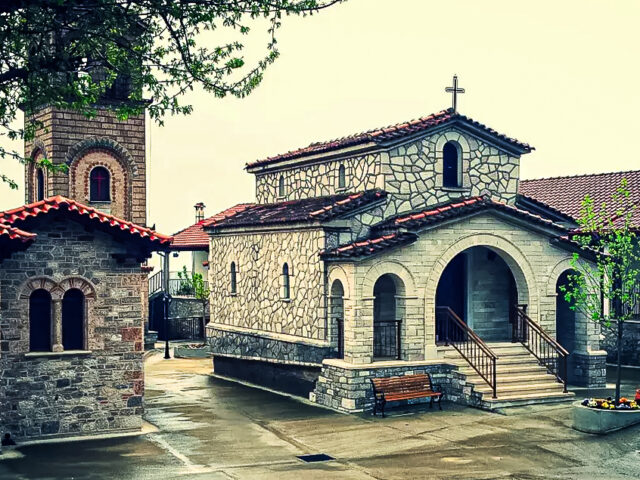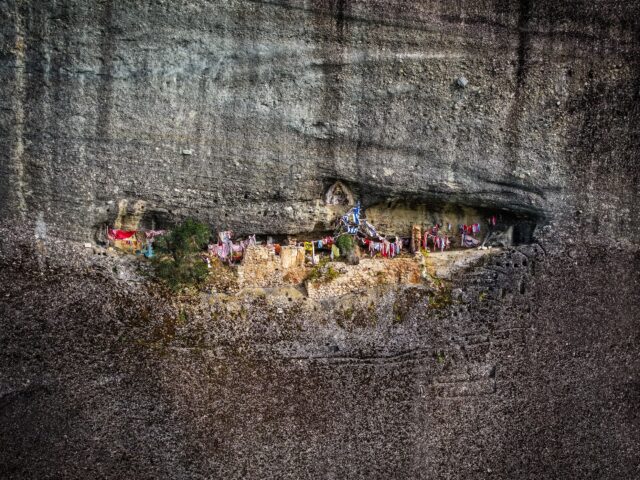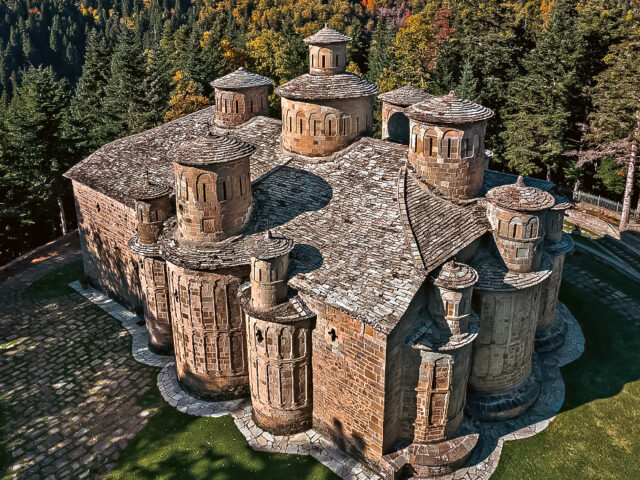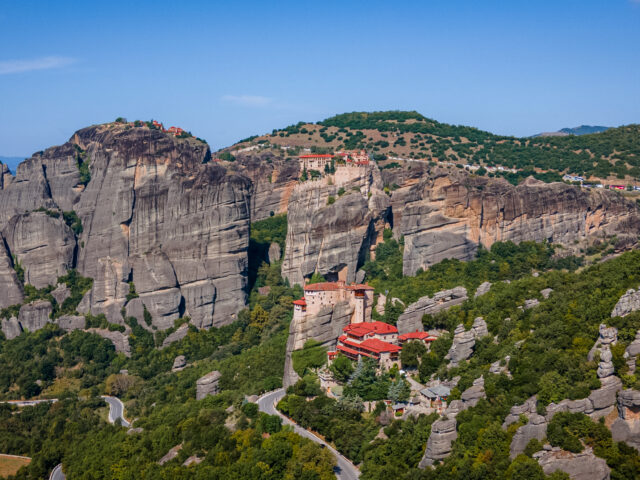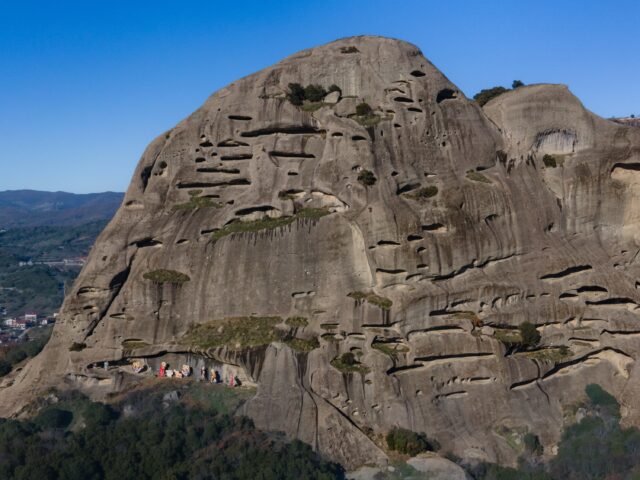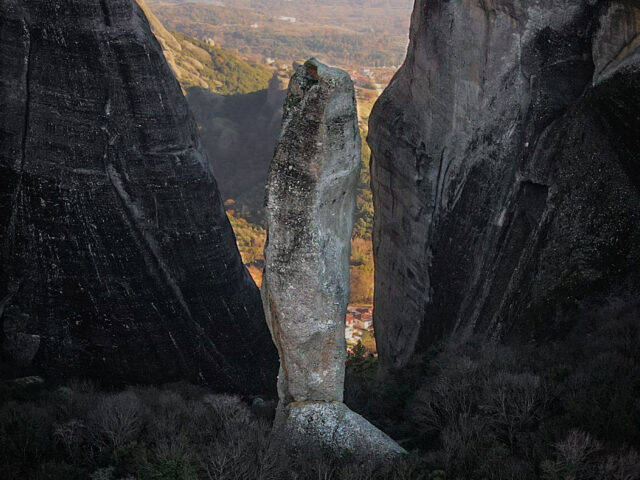Category: Geosites of Meteora – Pyli Geopark
The geosites of the Geopark combine unique geological history, natural beauty, rich biodiversity and cultural significance.
Geosites of archeological interest
Sites that bear witness to man’s primeval relationship with space, such as caves, archaeological sites and recorded prehistoric traces.
Geosites of Environmental Interest
Areas of rare natural beauty and biodiversity, hosting unique ecosystems and species of flora and fauna.
Geosites of Geological Interest
21 Geosites of natural and geological importance recognised by UNESCO. Discover the hidden treasures of Meteora – Pyli Geopark.
Geosites of Historical – Cultural Interest
Points of particular cultural importance, such as historical monuments, traditional settlements, monasteries and myths associated with the place.
On the eastern slopes of Mount Koziakas and at an altitude of 540 meters is the women's monastery of the Holy Monastery of the Assumption of the Virgin Mary of Vitouma. According to sources, it was founded in 1161 at the expense of Konstantinos Tarchaniotis and his wife Zoe. From…
View moreIn a natural cavity (tafoni) on the rock of Agios Pnevmas, opposite Panagia Doupiani in Kastraki, and accessible only to climbers, lies the Holy Monastery of Agios Georgios Mandilas. According to a long-standing local tradition, on the feast day of Saint George, at the end of the liturgical celebration, young…
View moreThe Holy Monastery of the Holy Cross of Dolianos Krania is one of the most remarkable post-Byzantine monuments of the 18th century. The pheronimos church, the only building that survives today, with its original and imposing architecture and the rich decoration, finds the place it deserves nestled in a green…
View moreMeteora is one of the most important geological monuments in Greece. It is a complex of impressive rock formations over an area of more than 7 square kilometers, with a height of up to 200 meters and a width that varies, and in some places reaches up to 300 meters….
View moreAt the western exit of Kalambaka city towards Kastraki, we encounter the rocks “Amparia” and “Bandova” of the Meteora complex. These two rocks are part of the Meteora Conglomerates, which are 10-20 million years old. On the surface of these two rocks we observe the characteristic ellipsoidal cavities called “tafoni”….
View moreAmong the rock formations of Meteora, an impressive styloid rock formation that resembles a stone needle stands out. “Adrachti” (Needle or Spindle) as it has been known through recent history, is a single pillar located south of Kastraki among the large rocks of Meteora, such as Modi and Agia. Meteora…
View moreSEARCH
Looking for more?
Cras rutrum tellus et vulputate accumsan. Sed id ultricies mauris, nec semper nisl.

